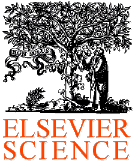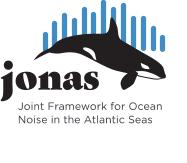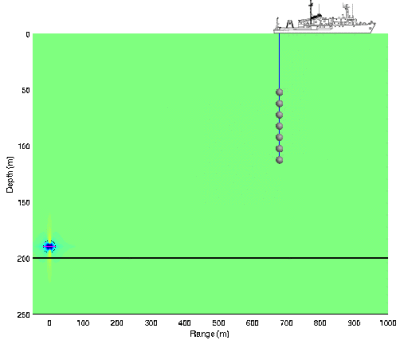|
You are not Logged in! Log in to check your messages. |

|
|
Check todays hot topics |
Web2Project Sign in
The cTraceo Acoustic Raytracing Model
The cTraceo Acoustic Raytracing Model is a 2D propagation model based on Gaussian beams for use in underwater acoustics and was developed at the Signal Processing Laboratory of the University of the Algarve.
Introduction
Technically, cTraceo was written in C and is based on Orlando Rodríguez'
TRACEO model written in Fortran 77.
The cTraceo model is a completely re-engineered version of it's Fortran predecessor and features 3-4x higher
performance, reduced memory usage of up to 3 orders of magnitude as well as better usability and portability.
Should you have any questions, suggestions or feedback, please don't hesitate in
contacting us.
You may also want to visit our wiki.
Downloads
See the features section below and take a look at our Getting Started guide before downloading.
Full download packages include compiled binaries (executables) for Windows and Linux,
in 32 and 64 bit flavors along with the source code and 40+ examples.
Compiled binaries of previous cTraceo versions are also included;
this is usefull when it is necessary to EXACTLY reproduce previously modeled results.
The list of changes between stable versions is maintained in the
changelog.txt.
The changes to the beta version currently in development are documented in the
development history.
| Version | Full Package | Binary Only | |||
| v1.5 Beta | Coming Soon | ||||
| v1.4 | ZIP | Linux 32b | Linux 64b | Windows 32b | Windows 64b |
| v1.3 | ZIP | Linux 32b | Linux 64b | Windows 32b | Windows 64b |
If you find any bugs, please make sure to report them in our issue tracker or contact us directly.
Features
- Support for range dependent altimetry and bathymetry interfaces, including range dependent elastic properties;
-
Reflections on elastic media interfaces take into account their densities as
well as compressional and
shear wave speeds and attenuations; - Range-independent sound speed profiles, and range-dependent sound speed fields;
- Support for user-defined smooth objects within waveguide (like rocks, marine mammals, submarines);
- Full suppport for backscattering (from altimetry, bathymetry and objects);
- Allows free positioning of acoustic source and receivers (altimetry, bathymetry, objects and receivers can easily beo be positioned on either side of the source for modeling complex waveguides);
- Support for horizontal, vertical, rectangular and arbitrarily shaped receiver arrays (allows modelling unusual array shapes, multiple hydrophone arrays as well as array distortions);
- Output options: ray trajectories and amplitudes, eigenray search (with user-definable proximity threshhold), arrival patterns, acoustic pressure, coherent transmission loss, as well as particle velocity components (for modeling vector sensors).
- Modeled results are written to legacy .mat files for easy importing into Matlab, Octave, Scilab, Python or others. Note that cTraceo does not rely on Matlab libraries to write these files, so there is no need to install or use Matlab. Instead we have developed a drop-in replacement for the Matlab C API for writing .mat files to handle this.
- Cross Platform: runs on both Windows and Linux, and has been tested successfully on an ARM embedded system.
Matlab Configuration & Example Cases
Several example cases are contained in the "examples/" subdirectory of the full download package. These examples depend on matlab functions contained in the "M-Files/" subdirectory and as such this folder should be added to the matlab path.
Within the provided example files the model is invoked by calling the command "ctraceo", and thus the "bin/" folder containing the compiled cTraceo binary should be on the system's PATH.
License Notes
The cTraceo Raytracing Model is released under the Creative Commons Attribution-NonCommercial-ShareAlike 3.0 Unported (CC BY-NC-SA 3.0) License.
Contact
The cTraceo model was written at the Signal Processing Laboratory of the University of the Algarve for project SENSOCEAN by:
Copyright (C) 2011 - 2014
This software is derived from the FORTRAN 77 TRACEO code, written by:
Copyright (C) 2010
NOTE: cTraceo is research code under active development. The code may contain bugs and updates are possible in the future.
Recent publications:
 Common dolphin's shipping noise risk assessment on the Portuguese coast,
Mar. Pol. Bull, 211 117415 [PDF]
February. 2025.
Common dolphin's shipping noise risk assessment on the Portuguese coast,
Mar. Pol. Bull, 211 117415 [PDF]
February. 2025.
 Influence of Dolphin-Watching Tourism Vessels on the Whistle
Emission Pattern of Common Dolphins and Bottlenose Dolphin, Oceans, Vol.5, 770-784
[PDF] 2024.
Influence of Dolphin-Watching Tourism Vessels on the Whistle
Emission Pattern of Common Dolphins and Bottlenose Dolphin, Oceans, Vol.5, 770-784
[PDF] 2024.
 Search Space Reduction for Localization and Tracking of an Acoustic
Source, Signals, 4 478-488 [PDF]
June 2023.
Search Space Reduction for Localization and Tracking of an Acoustic
Source, Signals, 4 478-488 [PDF]
June 2023.
Featured products:

PAM2py
download zip or github, a Python open source version of the PAMGuide package for Passive Acoustic Monitoring that features the Exchange Data Format (EDF) for facilitated underwater acoustic data sharing and metadata handling. Python allows for a crossplatform licence free processing of raw acoustic data and EDF output. A library of Python routines for EDF data reading and writing are also available. See manual here.